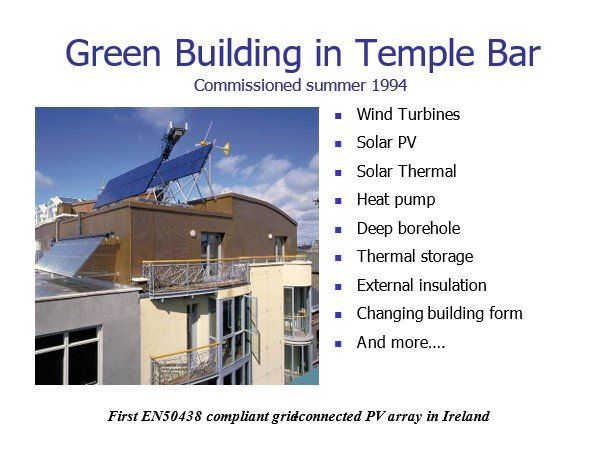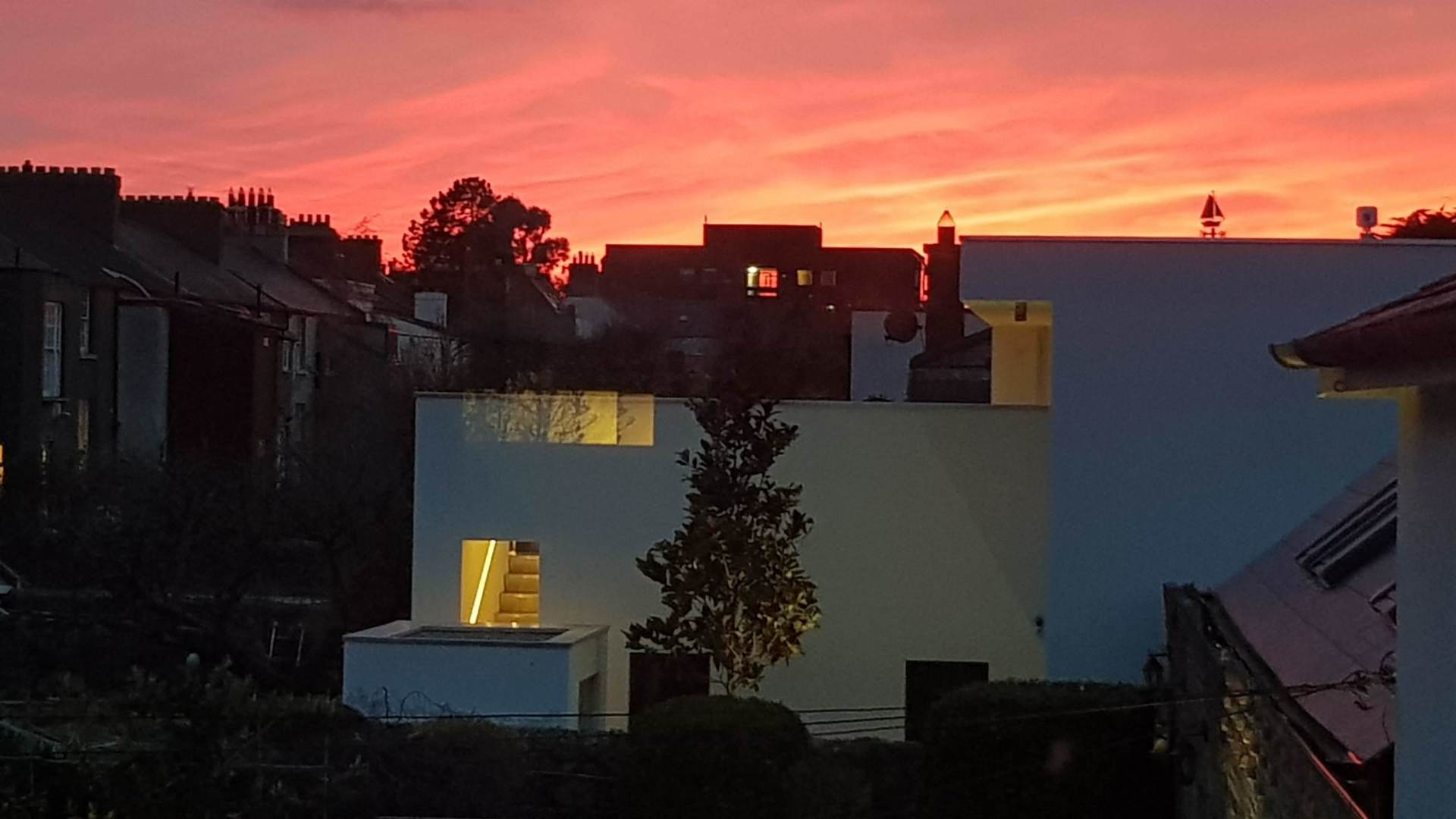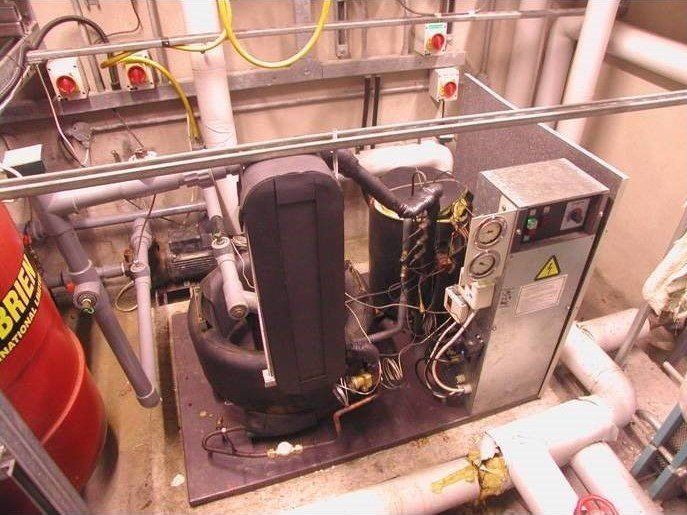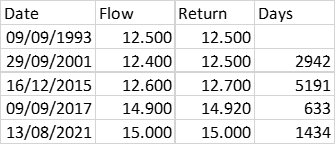The Green Building
Urban sustainablity
The Green Building has an A energy rating, contributing to the ESB grid. Since completion the project has been extensively published in Ireland and Europe and has come to be regarded as a key development in the evolution of sustainable building design.
Green Building in Temple Bar is showing alarming heating of bedrock under Dublin
The temperature of the limestone bedrock deep under Dublin has risen dramatically since the borehole for the Green Building in Temple Bar was first tested 28 years ago.
The temperature of this bedrock is checked from time to time by Tim Cooper as part of his on-going monitoring of the performance of the building. The most recent readings, taken on 13 August 2021, showed that the temperature of the bedrock has risen by 2.5°C in the last 28 years.
(These temperature readings were taken using the same two temperature sensors on 9 September 1993 and 13 August 2021. Both sensors gave readings that were within 0.1°C of each other (see readings below), so there is no reason to suspect that they are inaccurate).
Borehole flow and return temperatures
This astonishing data suggests that the entire planet, not just the atmosphere, is heating up dramatically. The only cause for this heating that we can think of is global warming, which was flagged dramatically in the slides presented by Tim Cooper at the launch of the Green Building on 14th September 1994 – see below.
Slides from lecture given by Tim Cooper in 1994












